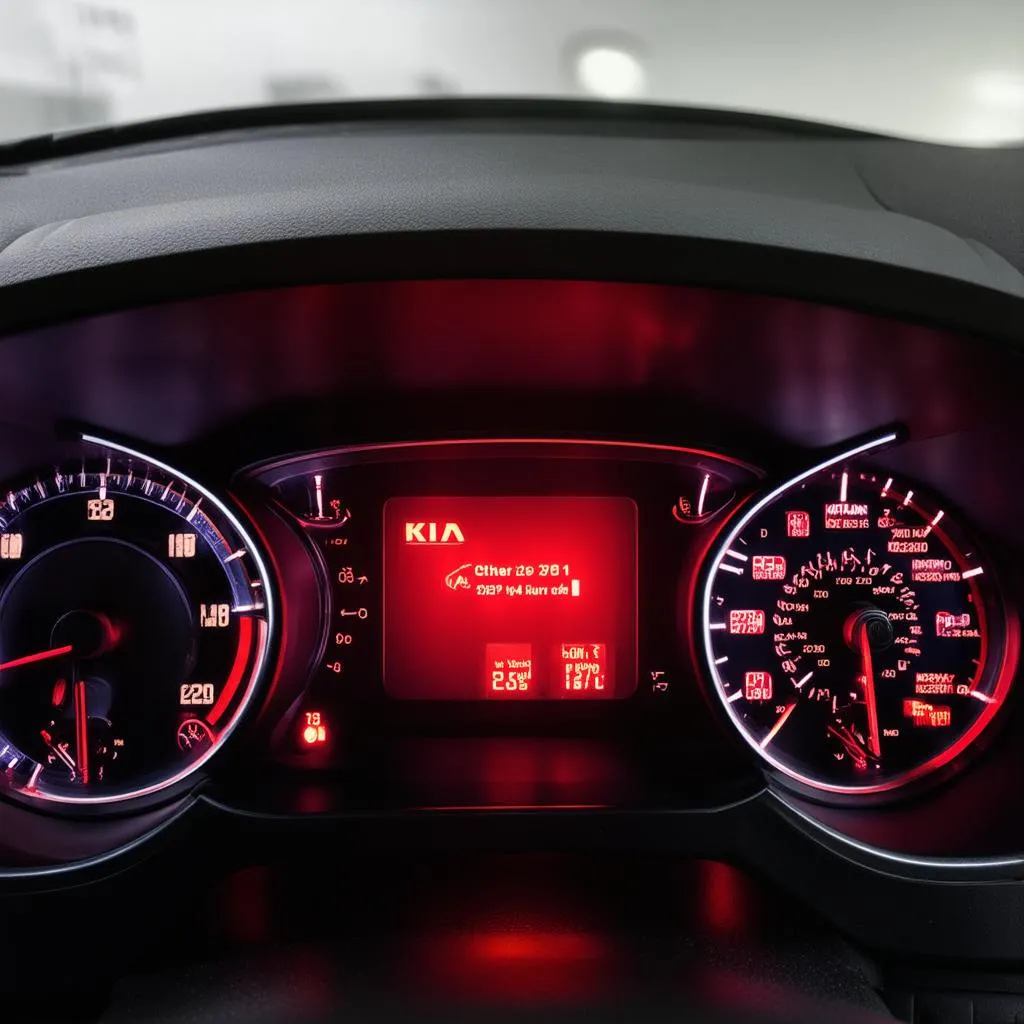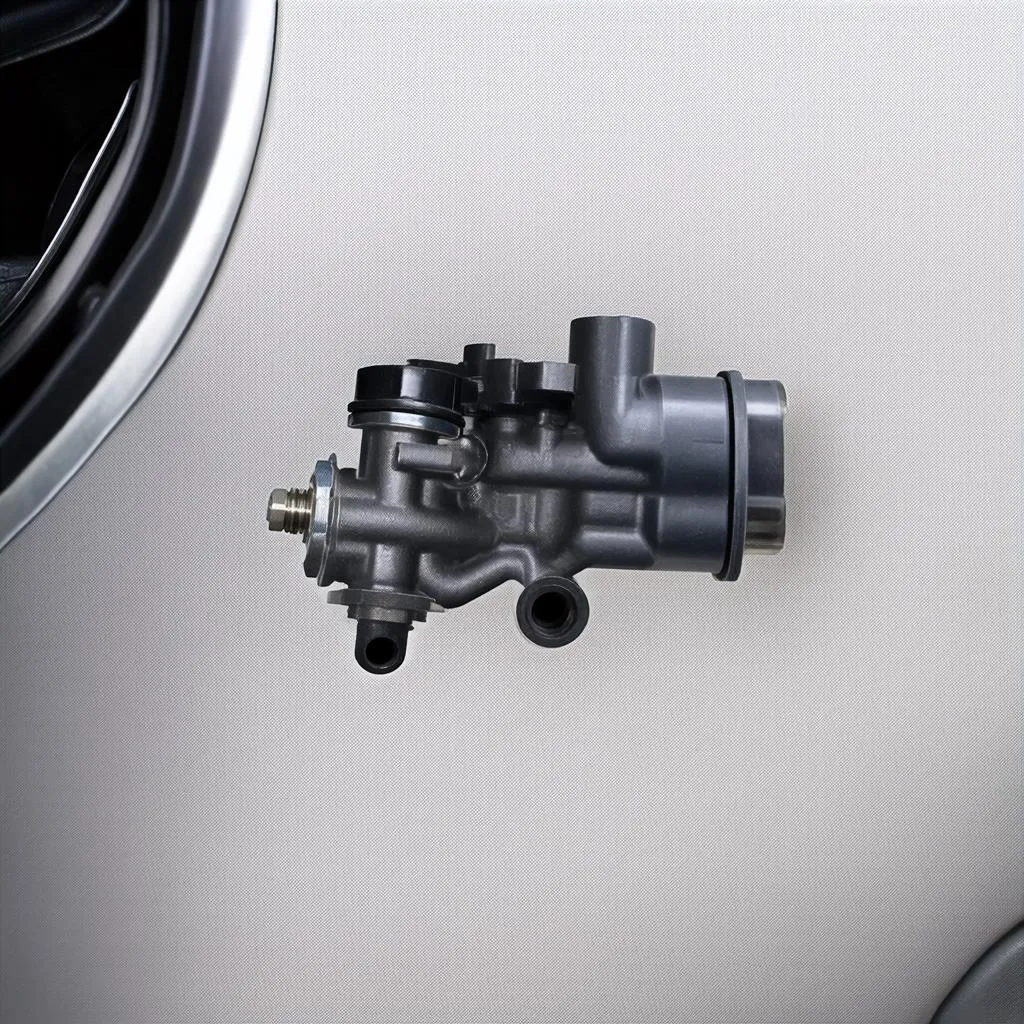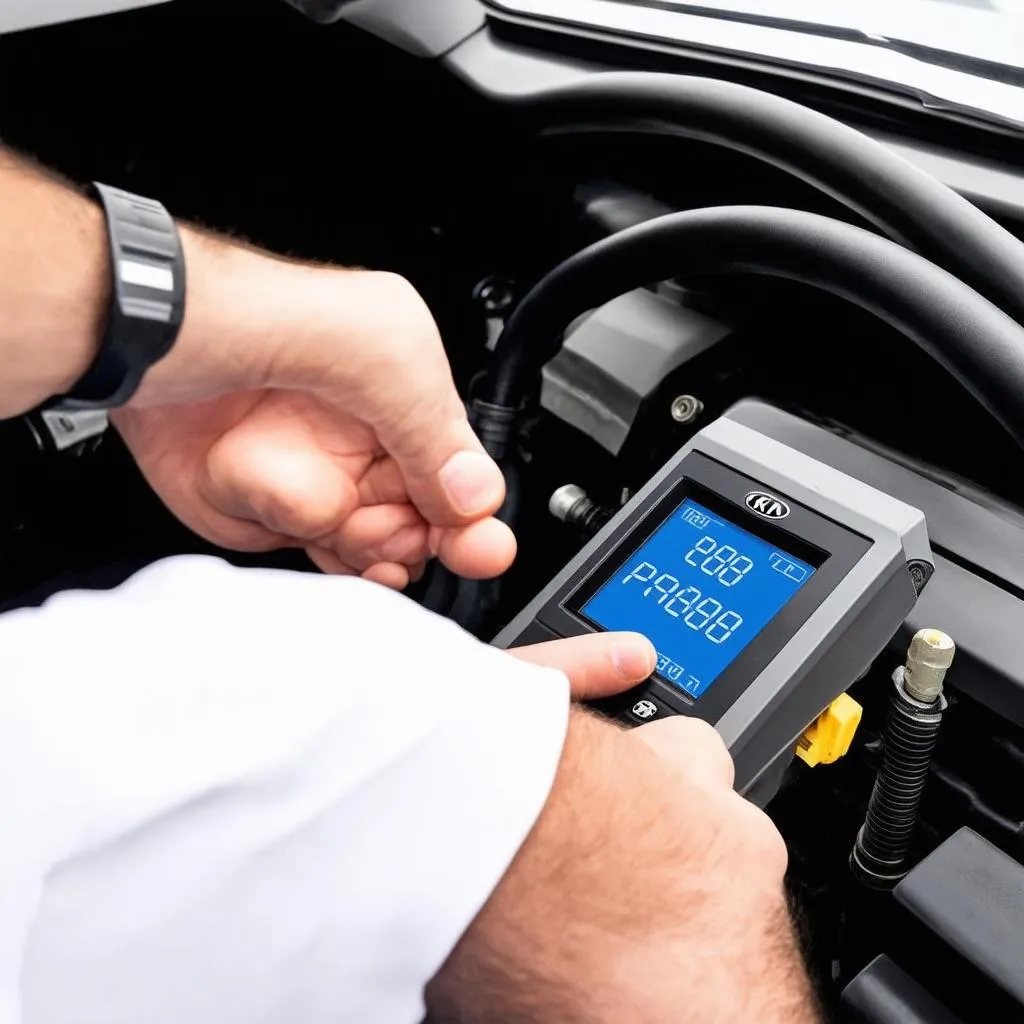Have you ever been driving your Kia and suddenly the check engine light illuminates, leaving you wondering what’s going on? You pull over, connect your OBD2 scanner, and the code P0400 pops up. What does this code mean, and what can you do about it? Let’s break it down.
What Does Kia Obd Code P0400 Mean?
The OBD code P0400 stands for “Exhaust Gas Recirculation (EGR) Flow Malfunction.” It’s a common code that indicates a problem with the EGR system, which is a critical part of your car’s emissions control system. Think of it like a balancing act for your engine – the EGR system helps reduce harmful emissions by recirculating a small portion of exhaust gases back into the combustion chamber.
Understanding the EGR System
Imagine you have a friend who loves to work on cars, and he’s explaining the EGR system to you. He might say, “The EGR system is like a clever valve that lets a bit of the exhaust gas back into the engine. It’s all about keeping things cool and clean, preventing those nasty emissions from escaping.”
This system is made up of several components, each playing a vital role. These components include:
- EGR Valve: This valve is like a gatekeeper, controlling the flow of exhaust gas back into the engine.
- EGR Cooler: The EGR cooler helps to cool down the exhaust gas before it’s reintroduced into the engine, preventing overheating.
- EGR Sensor: This sensor is a watchdog, monitoring the flow of exhaust gas and sending information to the engine control unit (ECU).
- EGR Vacuum Solenoid: This component opens and closes the EGR valve, controlled by the ECU.
Why is the EGR System Important?
- Reduced Emissions: The EGR system plays a crucial role in reducing harmful emissions from your car’s exhaust.
- Improved Fuel Efficiency: By recirculating exhaust gases, the EGR system can also slightly improve fuel efficiency.
Symptoms of a P0400 Code
You might notice some tell-tale signs that your Kia has a P0400 code, such as:
- Check Engine Light On: The most obvious symptom is the dreaded check engine light illuminating on your dashboard.
- Reduced Power: You might notice a decrease in engine power, especially when accelerating.
- Rough Idle: The engine might idle roughly or stall occasionally.
- Increased Fuel Consumption: You may notice a decrease in your gas mileage.
- Increased Emissions: Your car might produce more black smoke than usual.
Common Causes of Kia Obd Code P0400
So what could be causing that P0400 code? Here are some of the most common culprits:
- Faulty EGR Valve: The EGR valve is a common point of failure, leading to a blockage or sticking in the open or closed position.
- Clogged EGR Cooler: The EGR cooler can become clogged with carbon buildup, affecting the flow of exhaust gases.
- Defective EGR Sensor: The sensor may malfunction, sending inaccurate readings to the ECU.
- Vacuum Leak: A vacuum leak in the EGR system can disrupt the flow of exhaust gases.
- Failed EGR Vacuum Solenoid: The solenoid might not open or close the EGR valve properly.
- Wiring Issues: Faulty wiring or connectors in the EGR system can interrupt the electrical signals needed for the system to function properly.
How to Fix the P0400 Code
Fixing a P0400 code involves diagnosing the root cause of the problem. Here’s a general approach:
- Inspect the EGR System: Start by visually inspecting the EGR valve, cooler, and associated components for any obvious signs of damage or wear. Look for any signs of carbon buildup or leaks.
- Check for Vacuum Leaks: Use a vacuum gauge to test for any leaks in the vacuum lines connected to the EGR system.
- Test the EGR Valve: There are various methods to test the EGR valve, including a simple vacuum test or using a specialized tool.
- Clean the EGR System: If you find carbon buildup, cleaning the EGR valve and cooler can often resolve the issue. You can use a specialized EGR cleaner or a DIY solution.
- Replace Faulty Components: If the EGR valve, EGR sensor, or EGR solenoid is faulty, you’ll need to replace them with new components.
What to Do If You Have a P0400 Code
If you encounter a P0400 code, it’s best to consult a qualified mechanic for proper diagnosis and repair. They will have the necessary tools and expertise to pinpoint the underlying issue and recommend the best course of action.
Can You Drive with a P0400 Code?
Driving with a P0400 code is generally not recommended. While your car might still run, the problem with the EGR system could lead to increased emissions, reduced performance, and potential damage to your engine.
Other OBD Codes Related to the EGR System
If you encounter a P0400 code, there may be other related codes that could provide further insight into the issue. Some of these codes include:
- P0401 – EGR System Insufficient Flow: Indicates that the EGR flow is not sufficient.
- P0402 – EGR System Excessive Flow: Indicates that the EGR flow is too high.
- P0403 – EGR System Stuck Open: Indicates that the EGR valve is stuck open.
- P0404 – EGR System Stuck Closed: Indicates that the EGR valve is stuck closed.
- P0405 – EGR Position Sensor A Circuit Malfunction: Indicates a problem with the EGR sensor.
- P0406 – EGR Position Sensor B Circuit Malfunction: Indicates a problem with the EGR sensor (if equipped with two).
- P0407 – EGR Temperature Sensor A Circuit Malfunction: Indicates a problem with the EGR temperature sensor.
- P0408 – EGR Temperature Sensor B Circuit Malfunction: Indicates a problem with the EGR temperature sensor (if equipped with two).
- P0409 – EGR Flow A Circuit Malfunction: Indicates a problem with the EGR flow sensor.
- P0410 – EGR Flow B Circuit Malfunction: Indicates a problem with the EGR flow sensor (if equipped with two).
- P0411 – EGR System Intermittent: Indicates a sporadic problem with the EGR system.
FAQ: Frequently Asked Questions About Kia Obd Code P0400
Here are some commonly asked questions about the P0400 code:
Q: Can I clear the P0400 code myself?
A: While you can clear the code using an OBD2 scanner, it’s only a temporary solution. The underlying issue still needs to be addressed to prevent the code from reappearing.
Q: Is it safe to drive my Kia with a P0400 code?
A: It’s not recommended to drive your car with a P0400 code for extended periods. The problem with the EGR system could worsen, leading to reduced performance, increased emissions, and potential engine damage.
Q: How much will it cost to fix a P0400 code?
A: The cost to repair a P0400 code can vary depending on the cause of the problem, the make and model of your Kia, and the labor rates in your area. The cost could range from a few hundred dollars for a simple cleaning to over a thousand dollars for a replacement part.
Q: What is the best way to prevent the P0400 code from happening again?
A: Regular maintenance can help prevent the P0400 code. This includes:
- Regular Oil Changes: Use the recommended oil for your Kia and change it according to the manufacturer’s schedule.
- Fuel System Cleaning: Regularly clean your fuel injectors to prevent carbon buildup.
- EGR System Cleaning: Consider having your EGR system cleaned periodically by a qualified mechanic.
Conclusion
Encountering a Kia Obd Code P0400 can be a frustrating experience. However, by understanding the causes and symptoms of this code, you can take the necessary steps to address the issue promptly. Remember, regular maintenance and timely repairs can help keep your Kia running smoothly and efficiently for years to come.
If you’re still unsure about how to fix your Kia OBD Code P0400, don’t hesitate to reach out to our team of expert auto technicians at TechCarUSA.com. We’re here to help you diagnose the issue, recommend the best solution, and get your Kia back on the road in no time.
Contact us at Whatsapp: +84767531508 for 24/7 expert advice and support.
 Kia OBD Code P0400 Check Engine Light
Kia OBD Code P0400 Check Engine Light
 Kia OBD Code P0400 EGR Valve
Kia OBD Code P0400 EGR Valve
 Kia OBD Code P0400 Diagnostic Tool
Kia OBD Code P0400 Diagnostic Tool